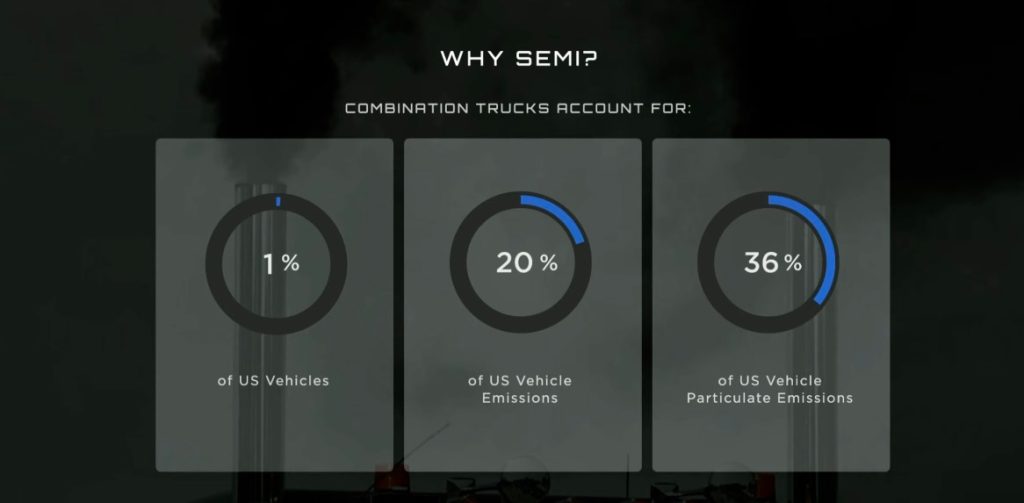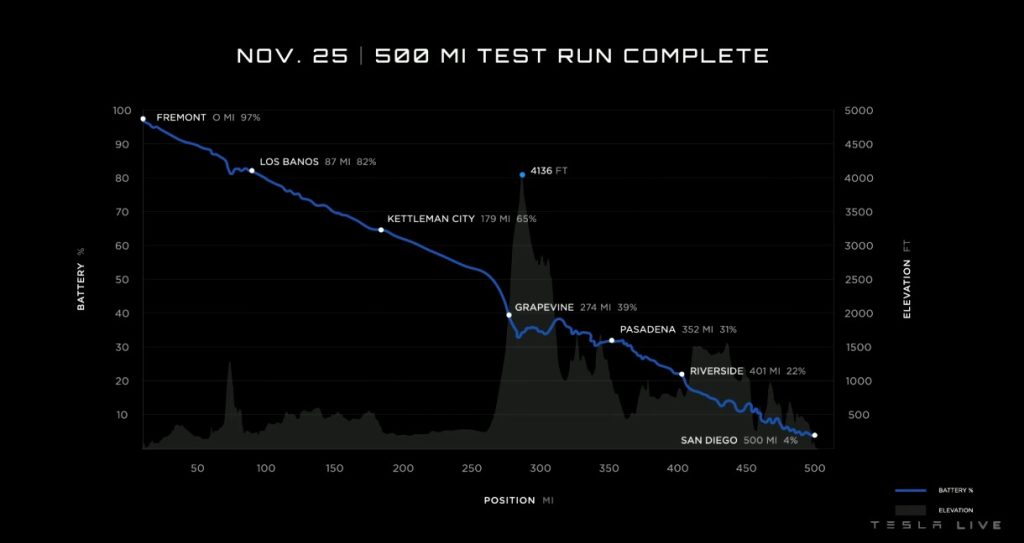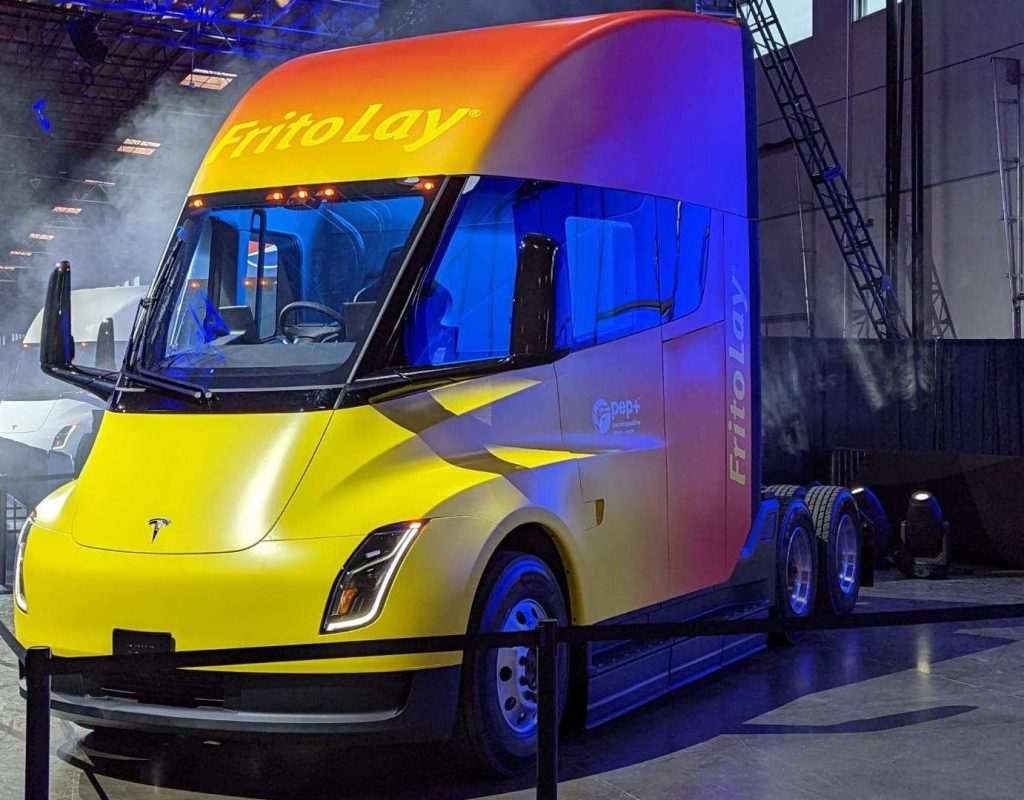
Tesla delivered its first Tesla Semi electric trucks to customers and revealed details of its production version of the vehicle – delivering on a five-year-old promise.
Today, the company held its Tesla Semi Delivery Event in Nevada.
As expected, Tesla delivered the first electric trucks to PepsiCo, a long-time reservation holder, and held a presentation to reveal more details about the production version of the Tesla Semi.
There wasn’t any big surprise during the presentation.
Tesla basically delivered on its original promises made in 2017 when it first unveiled the prototypes of the Tesla Semi.
Despite the lack of major changes, it’s still a big moment since the electric truck has the potential to change the trucking industry for good by eliminating emissions and significantly reducing costs.
The company started out by explaining why it is moving from making consumer electric vehicles to an electric class 8 truck. That’s pretty simple: Even if semi-trucks only account for about 1% of vehicles in the US, they account for about 20% of emissions:

Obviously, battery-electric class 8 trucks have an opportunity to greatly reduce those numbers.
But they need to be just as, if not more, capable than diesel semi-trucks in order to take over the market, and that’s exactly what Tesla claims to be delivering.
In terms of the technology powering the truck, things have changed since the original prototypes, but not in any major ways.
Tesla is now using a tri-motor drivetrain that is basically the same as in the Model S and Model X Plaid.

Dan Priestley, Tesla Semi Program manager, explained that Tesla is using one of the motors for cruising speed geared toward peak efficiency at highway speeds and the two other motors are used for torque when accelerating in order to create a smooth driving experience never seen in a class 8 truck before.
To prove the capacity, Tesla shared a very impressive video of a Tesla Semi loaded at 82,000 lb. passing a diesel truck at 6% incline on the Donner Pass as if it’s nothing:
Okay, it’s powerful, but can it travel long distances? Well, yes it can. Tesla promised a range of 500 miles with a full load five years ago, and it delivered on the promise.
Tesla shared data on a 500-mile trip with a full load of just under 82,000 lb. total with the tractor. It started out in the Bay Area with a 97% state of charge and ended up in San Diego with still 4% charge:

Tesla reiterated that it can achieve a less-than-2 kWh-per-mile efficiency, which means that trucking companies can achieve up to $70,000 in fuel savings per year depending on their cost of electricity.
Once the battery pack is depleted after 500 miles or so, you can expect blazing-fast charging thanks to the new 1-megawatt charging technology developed by Tesla. The automaker also said it will make it to the Cybertruck.
I felt like I was back in 2012 with the event as Elon Musk was again listing some basic benefits of electric vehicles that people coming from internal combustion engines wouldn’t necessarily be familiar with, like truck drivers who haven’t had the opportunity to go electric just yet.
Things like regenerative braking, which can greatly improve safety in trucks, and the millisecond reaction time of electric motors, resulting in greater traction control.
Tesla also unveiled several quality-of-life features for Tesla Semi drivers like an automatic suspension dump for easy latching to trailers, a cabin that you can stand in, and easy light checks for inspections.

There’s no doubt that the interior of the vehicle is cool and quite a change compared to most diesel trucks on the market today.
Now these machines are in the hands of customers for the first time starting with Pepsico/Frito Lay.

Electrek’s Take
There was no major surprise out of the event aside from maybe that the Cybertruck will have the same charging technology, but that’s not really about the Tesla Semi.
It felt like it was more about delivering on the promises made five years ago, and they mostly did that, to their credit.
There are only two major points that Tesla didn’t discuss that I think are important and we should know about: the price and the weight.
Tesla didn’t update the price, which originally was $200,000. I have a feeling that it might have changed after five years, but no word from Tesla about it.
Top comment by morrisg
Quite a bit changed on the Tesla Semi from 5 years ago. Originally, it was four Model 3 motors each driving a pair of drive wheels on one side of the semi. Model 3 motors are 400v systems. All the motors were continuously engaged with their respective drive axle via a simple gear reduction.
Now we see a 1000v system with one motor continuously engaged with a drive axle that drives both sides of the semi, and two motors with disengagement clutches each driving only one side of the semi. The disengagement clutches allow those motors to stop turning when the semi is at constant highway speed. This allows higher efficiency of operation. The two motors on separate axles is necessary to provide the anti-jack-knife capability by varying the regen force on each side of the semi to counteract the jack-knife forces.
What is still unclear to me is if the Tesla charging system is not compatible with the MCS (Megawatt Charging System) that CharIn finalized earlier this year. It seems to me that Tesla went its own way on the chargers but I'm not completely sure since the MCS system does support 1000v systems.
500 real world travel miles at full load capacity is quite an accomplishment. Trucking will change for the better with this new reality.
The other thing is the weight of the actual tractor, which is critical since the weight of the tractor dictates the weight of the load and the load is the trucking business. How much a truck can carry means how much money a trip can make up to a certain degree.
Class 8 trucks have a total limit (truck plus trailer with load) of 80,000 lb. and the tractor itself weighs between 12,000 and 25,000 lb. depending on the model. The difference is what it can carry.
Tesla only mentioned a total weight of 82,000 lb. (electric trucks are allowed an extra 2,000 lb.) during the event, but it never confirmed the weight of the Tesla Semi or load capacity. It would be important information to have.
Aside from the lack of those two important pieces of information, I feel like the event was impressive and Tesla might have a new very disruptive product on its hands.
FTC: We use income earning auto affiliate links. More.






Comments